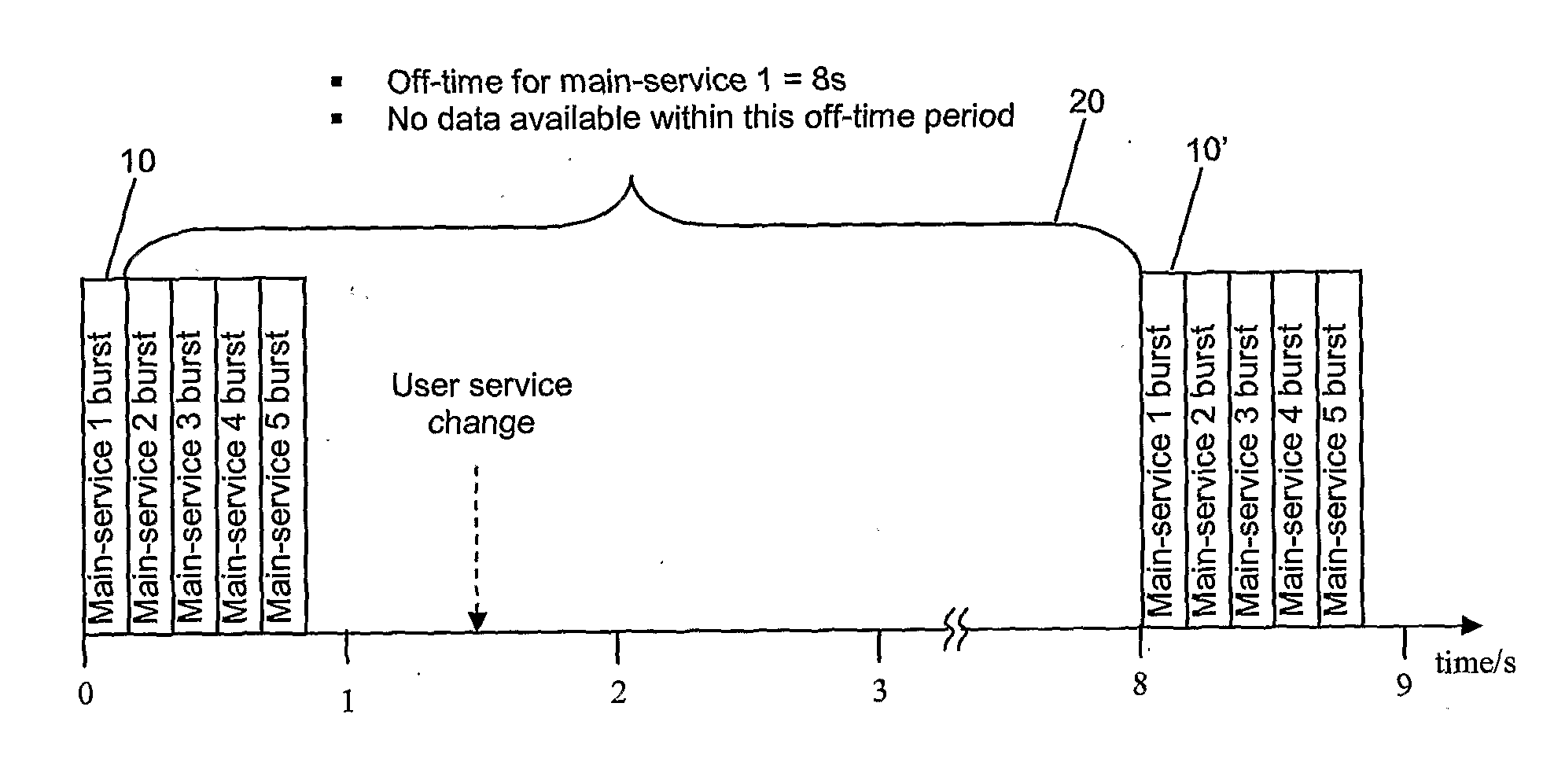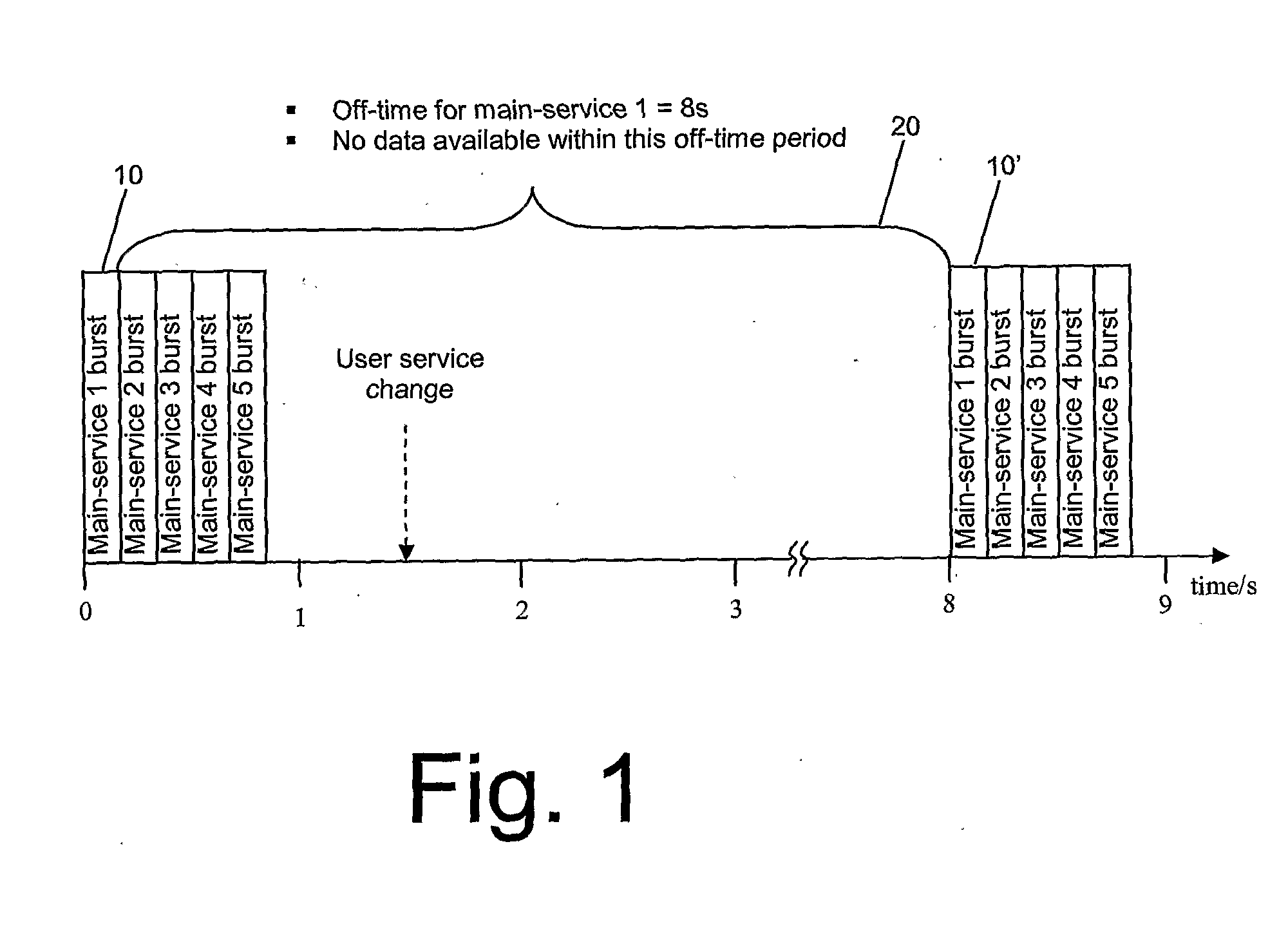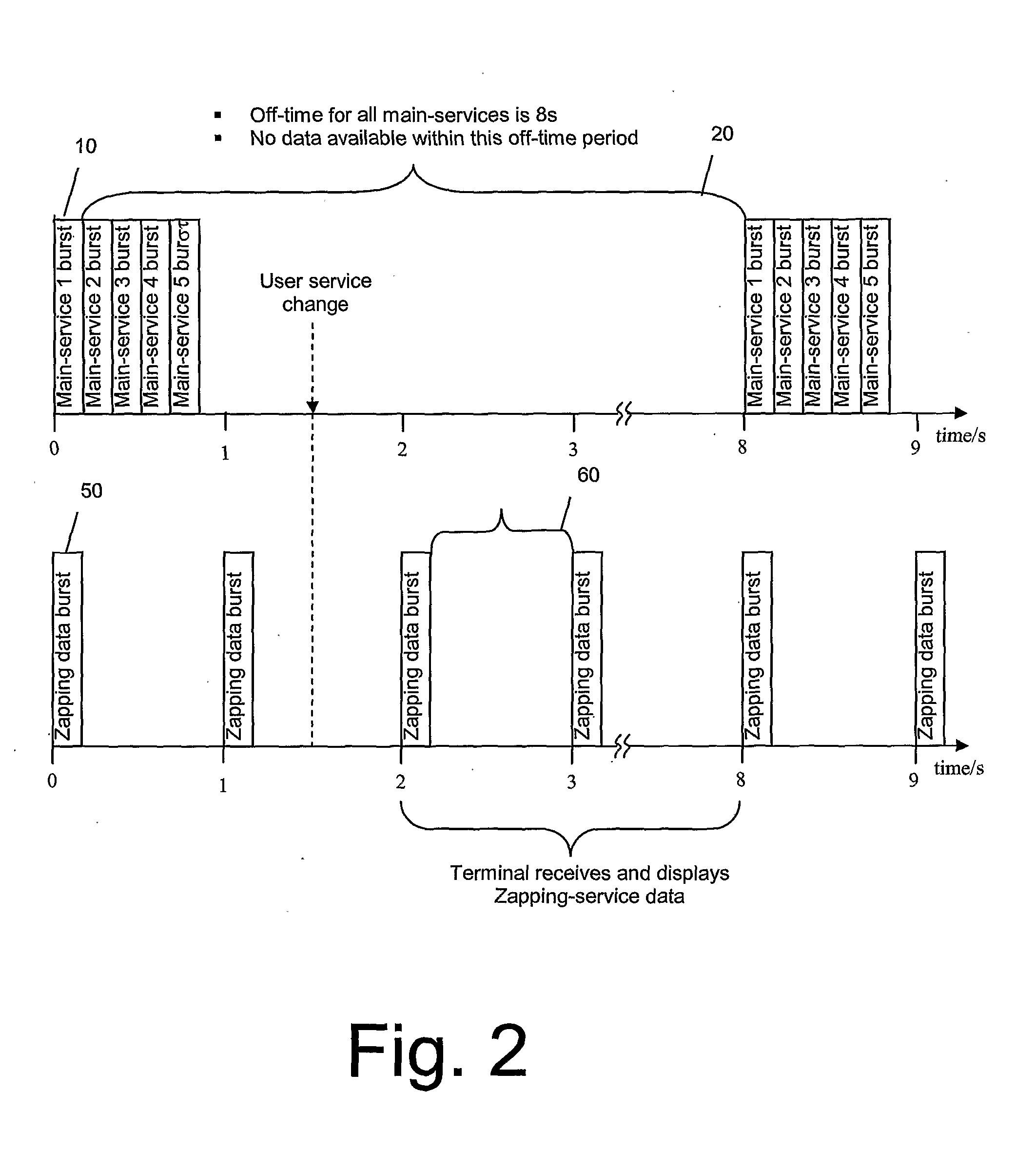Video encoder and decoder for an improved zapping service for mobile video reception
a video and mobile video technology, applied in the field of video encoding and decoding, can solve the problems of inability to quickly scan through the programs broadcast on different television channels, the service used in mobile handheld terminals only requires a relatively low bandwidth, and the mobile handheld device imposes further limitations, so as to reduce the waiting time
- Summary
- Abstract
- Description
- Claims
- Application Information
AI Technical Summary
Benefits of technology
Problems solved by technology
Method used
Image
Examples
Embodiment Construction
[0064]The illustrative embodiments of the present invention will now be described with reference to the drawings.
[0065]The present invention relates to the generation of a still picture type zapping service (second service) that has a precise matching of the content to a corresponding main video service (first service). The matching is achieved in a video encoder according to the present invention by encoding a given video frame twice, namely firstly into a P-frame as part of the main video stream, and secondly into an I-frame as part of the zapping stream.
[0066]The present invention further relates to the usage of a still picture type zapping service (second service) by a mobile receiving terminal, which provides the ability to start decoding a related main video service (first service) considerably earlier than in the prior art. Thereby, video decoding is improved.
[0067]The still picture type zapping service consists of a slide show, which is delivered separated from the main vide...
PUM
 Login to View More
Login to View More Abstract
Description
Claims
Application Information
 Login to View More
Login to View More - R&D
- Intellectual Property
- Life Sciences
- Materials
- Tech Scout
- Unparalleled Data Quality
- Higher Quality Content
- 60% Fewer Hallucinations
Browse by: Latest US Patents, China's latest patents, Technical Efficacy Thesaurus, Application Domain, Technology Topic, Popular Technical Reports.
© 2025 PatSnap. All rights reserved.Legal|Privacy policy|Modern Slavery Act Transparency Statement|Sitemap|About US| Contact US: help@patsnap.com



